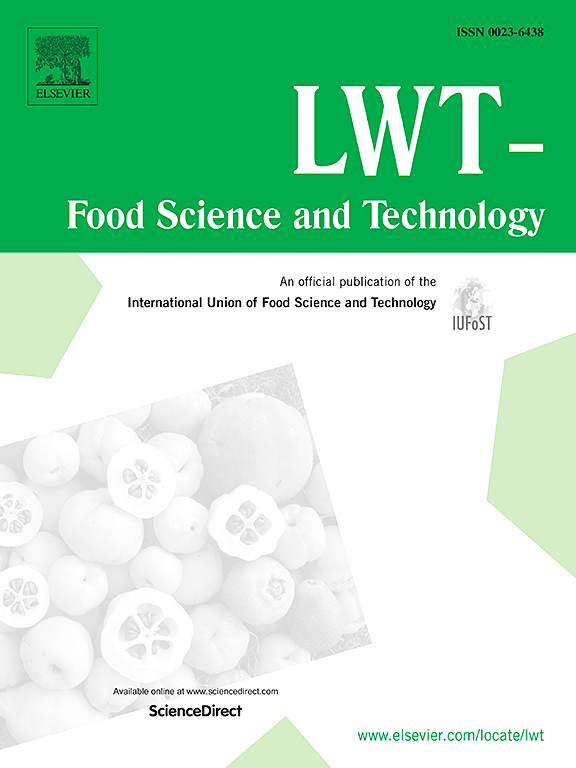双频超声波真空干燥对蜂蜜干燥特性和质量的影响
IF 6
1区 农林科学
Q1 FOOD SCIENCE & TECHNOLOGY
引用次数: 0
摘要
双频超声波真空干燥技术对粘性材料的影响尚未研究。因此,本研究以超声波功率、真空度和温度为单因素实验,研究了两种(28 + 28 kHz、40 + 40 kHz)双频超声波真空干燥方法对蜂蜜干燥特性和质量的影响。结果表明,超声波功率是主要的干燥因素,其次是真空度和温度。在六个模型中,对数模型是描述超声波真空干燥过程中蜂蜜水分变化规律最准确的模型。干燥温度和超声功率是影响蜂蜜中糖成分和羟甲基糠醛(HMF)含量变化的主要因素。同时,干燥后蜂蜜的颜色变深,硬度增加,粘度降低。综上所述,最佳超声波干燥组合为 28 + 28 kHz 超声波频率、80 W 超声波功率、-90 kPa 真空度和 30 °C 温度。这项研究为食品加工中超声波设备的改进和未来粘性材料的研究提供了重要信息。本文章由计算机程序翻译,如有差异,请以英文原文为准。
Effect of dual-frequency ultrasonic vacuum drying on drying characteristics and quality of honey
The effect of dual-frequency ultrasonic vacuum drying technology on viscous materials has not been studied. Therefore, in this research, the effects of two (28 + 28 kHz, 40 + 40 kHz) dual-frequency ultrasonic vacuum drying methods on the drying characteristics and quality of honey were investigated using ultrasonic power, vacuum and temperature as one-factor experiment. Results showed that ultrasonic power was the main drying factor, followed by vacuum degree, and temperature. Among the six models, the Logarithmic model was the most accurate one to describe the change rule of honey moisture during the ultrasonic vacuum drying process. Drying temperature and ultrasonic power were the main factors that affected the change of sugar composition and hydroxymethylfurfural (HMF) content in honey. Meanwhile, the color of honey after drying was darkened, the hardness was increased, while the viscosity was reduced. In summary, the optimal ultrasonic drying combination was 28 + 28 kHz ultrasonic frequency, 80 W ultrasonic power, −90 kPa vacuum degree and 30 °C temperature. This research provides essential information for equipment improvements for ultrasound in food processing and for future research on viscous materials.
求助全文
通过发布文献求助,成功后即可免费获取论文全文。
去求助
来源期刊

LWT - Food Science and Technology
工程技术-食品科技
CiteScore
11.80
自引率
6.70%
发文量
1724
审稿时长
65 days
期刊介绍:
LWT - Food Science and Technology is an international journal that publishes innovative papers in the fields of food chemistry, biochemistry, microbiology, technology and nutrition. The work described should be innovative either in the approach or in the methods used. The significance of the results either for the science community or for the food industry must also be specified. Contributions written in English are welcomed in the form of review articles, short reviews, research papers, and research notes. Papers featuring animal trials and cell cultures are outside the scope of the journal and will not be considered for publication.
 求助内容:
求助内容: 应助结果提醒方式:
应助结果提醒方式:


